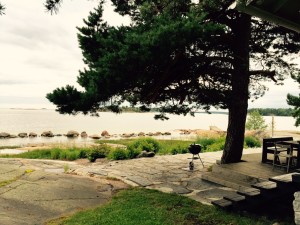Business Insider publishes every year the list of The Most Important Charts in the World .
To put up the list, they ask some of the world’s most influential analysts, economists, hedge-funders and traders one question: What charts are you always keeping your eyes on?
Almost all the answerers – 50 experts in economy – give a different answer. And that does not make an ordinary reader like me wiser.
I believe the 50 professionals – among them Nobelist Paul Krugman and Bloomberg’s chief economist Michael McDonough – follow more or less the same economic indexes, but what is the most important for each, depends on the job they do and the decisions they have to make.
So there is no such thing as the most important chart in the world.
I have not really been keeping my eyes on any economics chart, but now I am about to sell a hut. It is a tiny seafront cottage in my hometown Helsinki. It is surrounded by 100 other tiny cottages in the area that used to be a recreational place for city’s policemen and public transit workers.
At the turn of the millennium the city of Helsinki, who owns the land, decided that it was time for all the residents of the city to enjoy this place. Anyone living in Helsinki was allowed to buy a cottage from the area – if somebody was willing to sell.
I was one of the first “outsiders” to buy one. I bought it from an old constable’s widow for €6,000. I was lucky. The area is charming and prices of the huts soon started to go up.
Last year one of my neighbors sold her hut for €50,000. Another sold his for €38,000.
I did not consider selling mine until this August. My study year in California turned out to be more expensive than I expected (this is why).
The question is now: should I sell it or wait until later? What chart should I keep my eyes on?
I looked again at the Business Insiders most recent list of ”the most important charts in the world” (February 2015).
None of those indexes seemed to relate to my situation – except for Eurozone charts that showed that the economic situation in Europe is nothing but deteriorating.
As I need the money, I decided to follow my instinct with help of one chart.
Consumer Confidence Index (CCI) is measured world wide and ”based on households’ plans for major purchases and their economic situation, both currently and their expectations for the immediate future”, as OECD explains it.
In the U.S. the consumer confidence went down the first half of the year 2015 but increased during the summer months.
In the Euro area the confidence was increasing the first four months of the year but has since decreased. Finland’s figures are in line with the European ones.
Every month national center of statistics interviews 1200 Finnish consumers and compares their opinions to a ”normal” state. Long-term median value of the CCI in Finland is 11,8.
In June 2015 it was 10,8. In July it was 6,9.
With this in mind I figured that I should sell my cottage for any price as fast as I can, before consumer confidence is in zero.
However, when comparing to last year’s index, the CCI shows that confidence is in fact increasing. In August 2014 it was only 2,2.
When taking closer look I realized that opinions varied a lot. According to the most recent CCI 30 percent of the Finns believe that the economic situation of Finland will get better in year’s time. 27 percent believe that it will deteriorate.
What can I learn from this?
I do not think consumers are well-informed with the economics. In my opinion media fails to tell about money and markets comprehensively, and even the best economists fail to predict the future.
However, economy are not just facts. It much about trust and feelings.
When one consumer reads that – according to the CCI – other consumers are gaining confidence in the economics, he might think that: yes, it is time to buy the hut of his dreams.
And I am the one to sell him that.
There still might be people who have courage to buy a trendy cottage for a good price.

Leave a Reply
You must be logged in to post a comment.